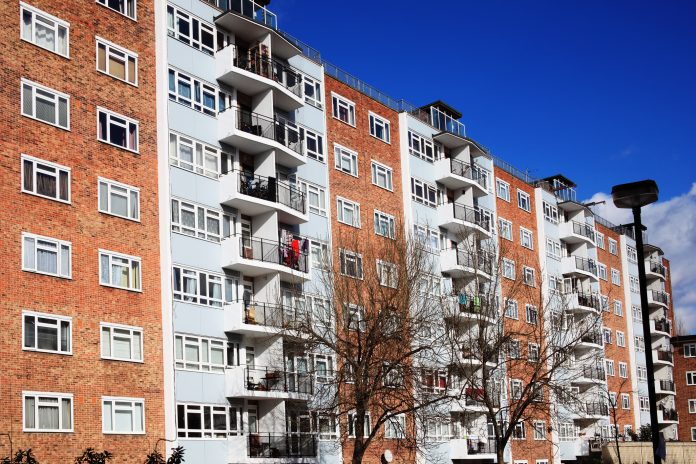As the Social Housing Regulation Bill makes its way through parliament, John Doyle of Voicescape says digital transformation can play a valuable role in improving resident and building safety
Change is afoot in social housing. The introduction of the new Social Housing Regulation Bill has set the tone for how the sector will be regulated moving forward. In essence, the bill has been designed to drive up social housing standards and bolster the regulator’s power to act.
The proposed changes are decisive – social landlords, whether private or local authority-led – could face unlimited fines for failing tenants. What’s more, the Regulator of Social Housing will possess stronger powers to enter properties with only 48 hours’ notice – down from 28 days – and make emergency repairs where there is a serious risk to tenants, with landlords footing the bill. This is not a softly, softly approach, but reform intended to ensure more people live in decent, well-looked-after homes.
In the words of former levelling up secretary Michael Gove: “We are driving up the standards of social housing and giving residents a voice to make sure they get the homes they deserve. That is levelling up in action.”
Addressing some of the systemic issues identified following the Grenfell Tower tragedy, the bill forms a key part of the government’s mission to level up across the country and deliver on the people’s priorities. The bill is very much people-focused and will give tenants a direct line to government, with a new 250-person residents’ panel convening every four months to share their experiences with ministers, informing policy thinking and helping to drive change in the sector.
For social housing providers and local authorities, this major reset of power between tenants and landlords is a significant step-change and one that will shine a spotlight on compliance, the way in which providers manage information and, importantly, how they engage with tenants.
While the political wheel may take time to turn, there is little doubt about the direction of travel and, as the bill passes through the various parliamentary stages, organisations have the opportunity to reassess and realign to the changing regulatory landscape.

What are the areas that need addressing in light of the Social Housing Regulation Bill?
It all boils down to building and resident safety, and resident voice and having the systems and processes in place to ensure providers remain faithful to the government’s ambition to drive up standards. Central to that is how organisations collect and utilise data to improve services, increase tenant engagement and raise satisfaction, while taking it a step further in understanding and, to an extent, predicting future behaviour.
Manual processes are time-intensive and will only serve to take organisations so far. The key to improving these services is embracing and making better use of digitisation, automation and behavioural insight to create efficiencies in processes and inform and guide decision-making, in light of the requirements laid out in the Social Housing Regulation Bill.
The hands-on aspect of building maintenance, repairs and safety inspections aren’t typically associated with digital transformation. Fixing problems and quality checks rely on in-person expertise and on-site experience, which isn’t always possible to replicate remotely. But, in a post-pandemic world, digitisation is evolving maintenance and safety services.
Covid-19 has encouraged many different industries and organisations to think differently. It has promoted new ways of managing gas and electrical safety inspections and maintenance work, for example, with local authority landlords showing how challenges can be turned into opportunities to improve efficiencies, as well as resident satisfaction. But how does it work in practice?
Landlords face a constant battle with accessing properties
There’s little doubt that local authorities work extensively to complete robust programmes of housing maintenance and safety checks. However, despite this, they still risk falling short of regulatory requirements because of a factor they have little control over – resident availability.
Social landlords face a tough task of ensuring they can access resident homes to complete works and checks. This is even more challenging for those local authorities that are responsible for tens of thousands of homes. Organising appointments can prove more challenging than the actual maintenance and inspections and can risk severe penalties from compliance failure, which will only increase under the government’s proposals.
To overcome the problem of no access to homes, social landlords have tended to adopt either a prescriptive approach or a more consultative method to arranging appointments. Embracing digitisation has changed these conventional processes and brought together the best of both worlds.
How can social landlords overcome the issue of no access for property checks?
While the approach of systematically scheduling appointments according to geography can optimise the movement of engineers, it can be disadvantageous, as it’s less resident-focused.
On the other hand, scheduling housing maintenance and safety visits using the consultative method allows for resident feedback but can prove time- and labour-intensive. This approach can also lead to fragmented engineering schedules, with appointments organised according to resident preference, rather than the most efficient travel route for engineers.

Is digital transformation the best of both worlds for scheduling maintenance visits?
Rethinking the pros and cons of each approach during the pandemic has seen social landlords embrace a trend of digital transformation, which combines the efficiencies and effectiveness of each method.
Automated calls are scheduled to contact tenants, which provide them with a proposed time and date for an appointment. The resident then has the option to press a button to confirm the appointment or to be connected with an adviser to make alternative arrangements that are more convenient for them.
This brings together the best of both worlds from the prescriptive and consultative approaches. Automated calls can be scheduled according to postcodes, while the resident engagement during the call minimises the possibility of no access appointments of these routes.
Call automation can reduce the time and staff resources associated with making outgoing calls, freeing-up adviser time to help residents that require support. The systematic logging of automated calls can also be used to create comprehensive audit trails, which support compliance requirements, as well as for scheduling appointment reminders that further reduce the volume of no access visits, which are incredibly costly to organisations.
This digital evolution of organising maintenance visits and gas and electrical safety inspections can improve operational efficiencies by as much as 60%, while driving up the rate of completed visits by 150%. Minimising no access appointments will not only save social landlords time and enhance compliance; it will also help dedicate more time and resources to supporting residents, boosting both standards and satisfaction and aligning landlords with the impending changes that will be born from the Social Housing Regulation Bill.














